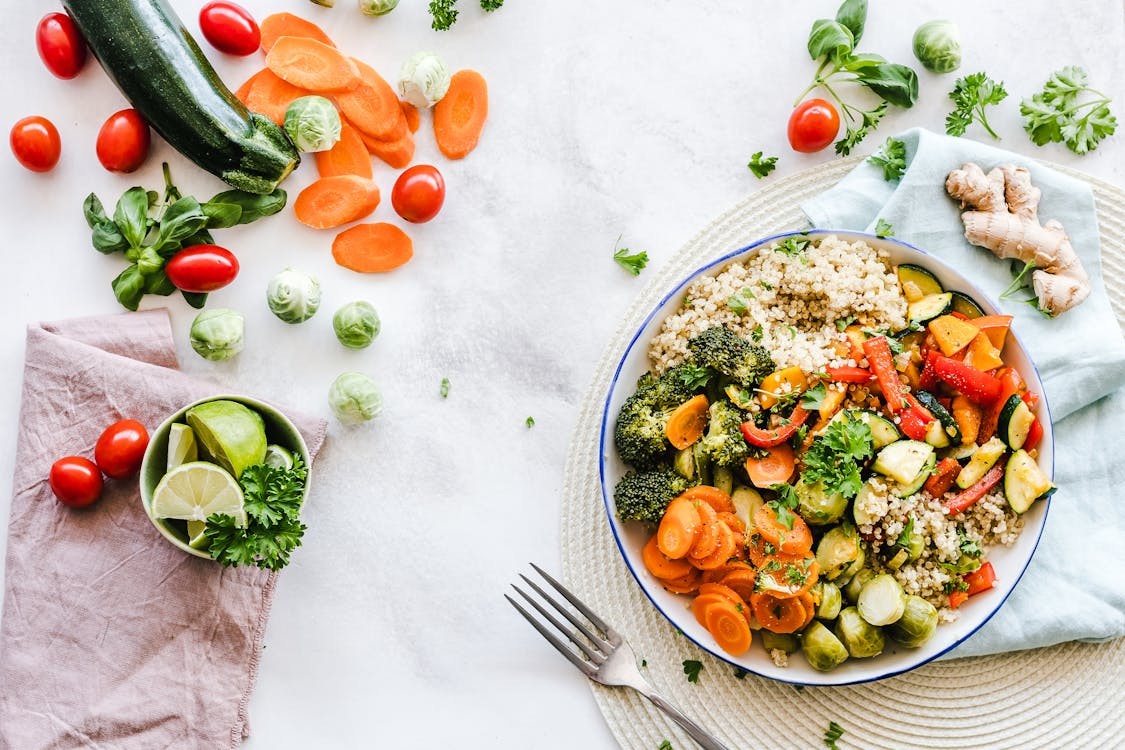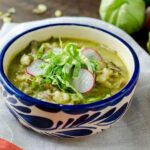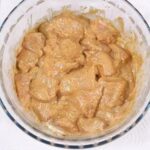What Foods Contain High Fructose? This question is vital for anyone aiming to make informed dietary choices. FOODS.EDU.VN offers insights into identifying and managing fructose intake for better health. Discover fructose-rich foods and healthier alternatives with FOODS.EDU.VN, optimizing your diet for well-being, blood sugar control, and weight management.
1. Understanding Fructose: A Sweet Introduction
Fructose, often dubbed “fruit sugar,” is a naturally occurring monosaccharide found in various plant-based foods. It’s significantly sweeter than glucose, another simple sugar, making it a common ingredient in both natural and processed foods. Understanding its role in our diet is essential for maintaining optimal health.
1.1. What Exactly is Fructose?
Fructose is a simple ketonic monosaccharide found in many plants, where it is often bonded to glucose to form the disaccharide sucrose. It’s one of the three dietary monosaccharides, along with glucose and galactose, that are absorbed directly into the blood during digestion. Fructose is the sweetest naturally occurring sugar, about 1.5 times sweeter than sucrose at similar concentrations.
1.2. Natural Sources of Fructose
Fructose naturally occurs in fruits, vegetables, and honey. These natural sources also provide essential vitamins, minerals, and fiber, contributing to a balanced diet.
- Fruits: Apples, pears, grapes, and dates are particularly high in fructose.
- Vegetables: Some vegetables, including carrots, sweet potatoes, and onions, contain moderate amounts of fructose.
- Honey: Honey is a concentrated source of fructose and glucose, making it a very sweet natural sweetener.
1.3. The Rise of High Fructose Corn Syrup (HFCS)
High Fructose Corn Syrup (HFCS) is a sweetener derived from corn starch that has undergone enzymatic processing to convert some of its glucose into fructose. This process results in a syrup with varying percentages of fructose, commonly used in the food industry due to its cost-effectiveness and sweetness.
- Production Process: Corn starch is broken down into glucose, and then enzymes are used to convert a portion of the glucose into fructose.
- Common Ratios: HFCS is typically available in two common ratios: HFCS-42 (42% fructose) and HFCS-55 (55% fructose).
- Widespread Use: HFCS is found in many processed foods and beverages, contributing significantly to added sugar intake in the modern diet.
2. Why Monitor Fructose Intake? Health Implications
While fructose from natural sources is generally part of a healthy diet, excessive consumption, especially from processed foods containing HFCS, can lead to various health issues.
2.1. Metabolic Effects of Fructose
Fructose is metabolized differently than glucose. It’s primarily processed in the liver, which can lead to several metabolic consequences when consumed in excess.
- Liver Metabolism: Unlike glucose, fructose doesn’t stimulate insulin secretion or enhance leptin production, both of which help regulate appetite and energy balance.
- Fat Production: Excessive fructose intake can lead to increased fat production in the liver, potentially contributing to non-alcoholic fatty liver disease (NAFLD).
- Triglyceride Levels: Fructose can also raise triglyceride levels in the blood, increasing the risk of heart disease.
2.2. Potential Health Risks Associated with High Fructose Consumption
Numerous studies have linked high fructose intake to several adverse health conditions.
- Obesity: High fructose consumption can contribute to weight gain and obesity due to its impact on appetite regulation and fat metabolism.
- Insulin Resistance and Type 2 Diabetes: Fructose can promote insulin resistance, increasing the risk of developing type 2 diabetes.
- Non-Alcoholic Fatty Liver Disease (NAFLD): Excessive fructose intake is a significant risk factor for NAFLD, a condition characterized by fat accumulation in the liver.
- Cardiovascular Disease: Elevated triglyceride levels and other metabolic changes induced by high fructose consumption can increase the risk of heart disease.
- Gout: Fructose metabolism can increase uric acid production, potentially leading to gout in susceptible individuals.
2.3. Fructose Malabsorption
Fructose malabsorption is a condition in which the small intestine has difficulty absorbing fructose. This can lead to gastrointestinal symptoms such as bloating, gas, and diarrhea.
- Symptoms: Common symptoms include abdominal pain, bloating, flatulence, and diarrhea after consuming fructose-rich foods.
- Diagnosis: Fructose malabsorption can be diagnosed through a hydrogen breath test.
- Management: Dietary modifications, such as limiting fructose intake, are the primary management strategy.
3. Identifying Foods High in Fructose: A Detailed List
Knowing which foods are high in fructose is crucial for managing your intake. Here’s a comprehensive list of foods and beverages to be mindful of.
3.1. Fruits with High Fructose Content
While fruits are nutritious, some contain higher levels of fructose than others.
| Fruit | Fructose Content (per 100g) | Notes |
|---|---|---|
| Apples | 6.1 g | Varies depending on the variety; some apples are lower in fructose |
| Pears | 9.7 g | Often higher in fructose than glucose |
| Grapes | 8.1 g | Both green and red grapes contain significant fructose |
| Cherries | 7.0 g | Sweet cherries are higher in fructose |
| Mangoes | 7.0 g | Ripe mangoes are quite sweet |
| Watermelon | 3.4 g | Although lower than others, it’s often consumed in large quantities |
| Dried Fruits | Varies, generally high | Dehydration concentrates the fructose |


3.2. Vegetables with Notable Fructose Levels
While vegetables are generally low in fructose, some contain moderate amounts.
| Vegetable | Fructose Content (per 100g) | Notes |
|---|---|---|
| Sweet Potatoes | 1.5 g | Sweeter than regular potatoes, hence the higher fructose content |
| Onions | 1.1 g | Fructose content increases when cooked |
| Carrots | 1.0 g | A common and versatile vegetable |
| Bell Peppers | 0.9 g | Especially red and yellow bell peppers |
3.3. Sweeteners: The Primary Culprits
Sweeteners, especially those added to processed foods, are a major source of fructose in many diets.
| Sweetener | Fructose Content (%) | Notes |
|---|---|---|
| High Fructose Corn Syrup | 42-55% | Commonly used in soft drinks, processed foods, and baked goods |
| Honey | 40% | Natural, but still high in fructose; use in moderation |
| Agave Nectar | 70-90% | Marketed as a “healthy” alternative, but very high in fructose |
| Maple Syrup | 1-7% | Lower in fructose compared to others, but should still be used sparingly |
| Fruit Juice Concentrates | Varies, generally high | Concentrated fructose levels make these a significant source |
3.4. Processed Foods: Hidden Sources of Fructose
Many processed foods contain added fructose in the form of HFCS or other sweeteners.
- Soft Drinks: Sodas and other sweetened beverages are often loaded with HFCS.
- Candy and Sweets: Candies, chocolates, and other sweets are typically high in fructose.
- Baked Goods: Cakes, cookies, pastries, and other baked goods often contain added fructose.
- Breakfast Cereals: Many breakfast cereals are sweetened with HFCS or other high-fructose sweeteners.
- Sauces and Dressings: Ketchup, salad dressings, and other sauces can contain significant amounts of added fructose.
- Yogurt: Flavored yogurts often have added sugars, including fructose.
4. Lower Fructose Alternatives: Making Smart Choices
Choosing lower fructose alternatives can help you enjoy a balanced diet without excessive fructose intake.
4.1. Fruits Lower in Fructose
Opting for fruits with lower fructose content can be a good strategy.
| Fruit | Fructose Content (per 100g) | Notes |
|---|---|---|
| Avocados | 0.3 g | Very low in fructose and high in healthy fats |
| Cranberries | 1.2 g | Tart and low in sugar |
| Raspberries | 2.3 g | Berries are generally lower in fructose |
| Blackberries | 2.0 g | Another good berry choice |
| Strawberries | 2.3 g | Versatile and widely available |
| Lemons/Limes | <1 g | Excellent for flavoring without adding significant fructose |
4.2. Alternative Sweeteners
Consider using alternative sweeteners that are lower in fructose.
| Sweetener | Fructose Content (%) | Notes |
|---|---|---|
| Stevia | 0% | Natural, non-caloric sweetener |
| Erythritol | 0% | Sugar alcohol with very few calories |
| Monk Fruit | 0% | Natural sweetener derived from monk fruit |
| Allulose | Minimal | Rare sugar with minimal impact on blood sugar |
| Brown Rice Syrup | 0% | Made from fermented cooked rice. |
4.3. Tips for Reducing Fructose Intake
Making simple changes to your eating habits can significantly reduce your fructose consumption.
- Read Labels Carefully: Check food labels for HFCS, fructose, and other added sugars.
- Choose Whole Foods: Focus on whole, unprocessed foods like fruits, vegetables, and lean proteins.
- Limit Processed Foods: Reduce your intake of soft drinks, candy, baked goods, and other processed foods.
- Cook at Home: Preparing meals at home allows you to control the ingredients and avoid added fructose.
- Use Natural Sweeteners Sparingly: If you need to sweeten foods, use natural sweeteners like stevia or erythritol in moderation.
- Be Mindful of Portion Sizes: Even with lower fructose options, be mindful of portion sizes to avoid overconsumption.
5. The Science Behind Fructose: Research and Studies
Numerous studies have investigated the effects of fructose on health. Here’s a look at some key research findings.
5.1. Key Studies on Fructose Metabolism
Research has shown that fructose is metabolized differently from glucose, primarily in the liver, which can lead to various metabolic consequences.
- 2017 Literature Review: A review published in Nutrients found that excessive fructose consumption may increase the risk of obesity and related conditions like metabolic syndrome.
- 2016 Study: A study in the Journal of Pediatrics found that fructose-rich drink consumption in adolescents was associated with higher levels of insulin resistance.
- NIH Research: The National Institutes of Health (NIH) has highlighted that high fructose intake may trigger fatty liver disease.
5.2. Fructose and Liver Health
Fructose metabolism in the liver has been linked to non-alcoholic fatty liver disease (NAFLD).
- Increased Fat Production: Fructose can promote the production of triglycerides and fat accumulation in the liver.
- Inflammation: Excessive fructose intake can lead to liver inflammation and damage.
- Nonalcoholic Steatohepatitis (NASH): NAFLD can progress to NASH, a more severe form of liver disease.
5.3. Fructose and Cardiovascular Health
High fructose consumption can negatively impact cardiovascular health by raising triglyceride levels and promoting insulin resistance.
- Elevated Triglycerides: Fructose can increase blood triglyceride levels, a risk factor for heart disease.
- Insulin Resistance: Fructose-induced insulin resistance can contribute to cardiovascular problems.
- Increased Blood Pressure: Some studies suggest that high fructose intake may raise blood pressure.
5.4. Fructose and Cancer Risk
Recent research has explored the potential link between fructose consumption and cancer.
- Animal Studies: Studies on mice have indicated that high fructose intake can promote intestinal tumor growth and increase the aggressiveness of tumors.
- Anemia: Fructose consumption has been linked to anemia in mice with colorectal cancer, potentially affecting survival rates.
- Need for Human Studies: More research is needed to confirm these effects in humans.
6. Fructose in the Diet: Practical Tips and Guidelines
Balancing fructose intake within a healthy diet involves practical strategies and informed choices.
6.1. Recommended Daily Intake of Fructose
There is no specific recommended daily intake of fructose. However, health organizations generally advise limiting added sugar intake, which includes fructose from HFCS and other sweeteners.
- American Heart Association: Recommends no more than 6 teaspoons (25 grams) of added sugar per day for women and 9 teaspoons (36 grams) per day for men.
- World Health Organization: Suggests limiting added sugar intake to less than 10% of total daily calories, with a further reduction to below 5% for additional health benefits.
6.2. Reading Food Labels for Fructose Content
Understanding how to read food labels is crucial for identifying and managing fructose intake.
- Look for Added Sugars: Check the “added sugars” section on the nutrition facts label.
- Identify HFCS: Look for “high fructose corn syrup” in the ingredient list.
- Be Aware of Other Sweeteners: Be mindful of other high-fructose sweeteners like agave nectar and fruit juice concentrates.
- Compare Products: Compare the sugar content of different products and choose lower-sugar options.
6.3. Meal Planning for Low Fructose Diets
Planning meals with lower fructose content can be simple and enjoyable with the right strategies.
- Focus on Whole Foods: Build meals around whole, unprocessed foods like lean proteins, vegetables, and whole grains.
- Use Fresh or Frozen Fruits: Choose fruits lower in fructose and enjoy them in moderation.
- Cook at Home: Prepare meals at home to control ingredients and avoid added sugars.
- Plan Ahead: Plan your meals in advance to ensure you have healthy, low-fructose options available.
- Get Creative with Flavors: Use herbs, spices, and other natural flavorings to enhance the taste of your meals without adding sugar.
7. Expert Opinions on Fructose
Guidance from nutritionists and dietitians can offer further clarity on managing fructose intake effectively.
7.1. The Role of Nutritionists
Nutritionists play a crucial role in guiding individuals toward healthier eating habits by providing personalized dietary advice. They help individuals understand the impact of fructose on their health and offer strategies for making informed food choices.
- Personalized Dietary Plans: Nutritionists develop customized meal plans that cater to individual health needs and preferences.
- Education on Fructose: They educate clients on the sources of fructose and its potential health implications.
- Behavioral Strategies: Nutritionists provide behavioral strategies to help individuals reduce their consumption of high-fructose foods.
7.2. The Role of Dietitians
Dietitians are healthcare professionals who are experts in food and nutrition. They use medical nutrition therapy to treat various health conditions and provide evidence-based dietary advice.
- Medical Nutrition Therapy: Dietitians offer medical nutrition therapy to manage conditions such as diabetes, obesity, and NAFLD, which are often linked to high fructose intake.
- Evidence-Based Advice: They provide dietary recommendations based on the latest scientific research.
- Comprehensive Assessments: Dietitians conduct thorough assessments of an individual’s dietary habits and health status to develop tailored nutrition plans.
7.3. Quotes from Health Professionals
Insightful quotes from health professionals can provide a deeper understanding of the impact of fructose on health.
- Dr. John Smith, Nutritionist: “Limiting high-fructose corn syrup is one of the most important steps you can take to improve your diet. Start by reading labels and avoiding processed foods.”
- Jane Doe, Registered Dietitian: “Fructose is not inherently bad, but excessive intake, especially from sweetened beverages and processed foods, can have serious health consequences. Focus on whole foods and natural sources of sweetness in moderation.”
- Michael Brown, Endocrinologist: “In my practice, I often see patients with insulin resistance and fatty liver disease linked to high fructose consumption. Education and dietary changes are key to managing these conditions.”
8. Real-Life Examples
Case studies and success stories illustrate how reducing fructose intake can improve health and well-being.
8.1. Case Study 1: Managing NAFLD through Diet
Background:
John, a 45-year-old office worker, was diagnosed with non-alcoholic fatty liver disease (NAFLD) during a routine check-up. He had a habit of drinking several sodas a day and frequently ate fast food.
Intervention:
John consulted with a dietitian who developed a low-fructose meal plan for him. The plan focused on whole foods, lean proteins, and limited processed items. He replaced sodas with water and unsweetened tea, and reduced his intake of baked goods and sweets.
Outcome:
After six months, John’s liver enzyme levels improved significantly, and an ultrasound showed a reduction in liver fat. He also lost weight and reported feeling more energetic.
8.2. Success Story 2: Reversing Insulin Resistance
Background:
Maria, a 38-year-old teacher, was diagnosed with insulin resistance and was at risk of developing type 2 diabetes. Her diet was high in processed foods and sugary snacks.
Intervention:
Maria worked with a nutritionist to create a meal plan that emphasized whole foods, fruits lower in fructose, and alternative sweeteners. She eliminated HFCS from her diet and focused on cooking meals at home.
Outcome:
Within three months, Maria’s insulin sensitivity improved, and her blood sugar levels stabilized. She also experienced weight loss and improved overall health.
8.3. Testimonials from People Who Reduced Fructose Intake
Hearing from individuals who have successfully reduced their fructose intake can be motivating.
- Sarah, 32: “Cutting out high-fructose corn syrup has made a huge difference in my energy levels. I used to feel sluggish all the time, but now I feel much more alert and active.”
- David, 50: “I was surprised at how much better I felt after reducing my sugar intake. My digestion improved, and I no longer have those afternoon energy crashes.”
- Emily, 28: “Changing my diet has been a game-changer. I’ve lost weight, my skin is clearer, and I feel so much healthier overall.”
9. Frequently Asked Questions (FAQs)
Addressing common queries about fructose can provide clarity and guidance.
9.1. Is Fructose Worse Than Glucose?
Fructose and glucose have different metabolic effects. Excessive fructose intake, especially from processed foods, can lead to more adverse health outcomes compared to glucose.
9.2. Can I Eat Fruit If I’m Limiting Fructose?
Yes, you can still eat fruit while limiting fructose. Choose fruits lower in fructose, such as berries, avocados, and citrus fruits, and enjoy them in moderation.
9.3. What Are the Best Sweeteners to Use If I’m Avoiding Fructose?
Stevia, erythritol, monk fruit, and allulose are good alternatives to high-fructose sweeteners.
9.4. How Can I Tell If a Food Contains High Fructose Corn Syrup?
Check the ingredient list on the food label for “high fructose corn syrup.” It is often found in soft drinks, processed foods, and baked goods.
9.5. What Are the Symptoms of Fructose Malabsorption?
Symptoms of fructose malabsorption include abdominal pain, bloating, gas, and diarrhea after consuming fructose-rich foods.
9.6. Is Honey a Healthy Sweetener?
Honey is a natural sweetener but is still high in fructose. Use it in moderation and consider other lower-fructose options.
9.7. How Does Fructose Affect My Liver?
Fructose is metabolized primarily in the liver. Excessive intake can lead to increased fat production, inflammation, and non-alcoholic fatty liver disease (NAFLD).
9.8. Can Reducing Fructose Intake Help with Weight Loss?
Yes, reducing fructose intake can contribute to weight loss by reducing overall calorie intake and improving metabolic health.
9.9. What Role Does Fructose Play in Diabetes?
High fructose intake can promote insulin resistance, increasing the risk of developing type 2 diabetes. Managing fructose intake is important for individuals with diabetes or at risk of developing the condition.
9.10. Where Can I Find More Information on Healthy Eating?
Visit FOODS.EDU.VN for more information on healthy eating, nutrition, and delicious recipes!
10. Conclusion: Making Informed Choices for Better Health
In conclusion, understanding what foods contain high fructose and making informed dietary choices is crucial for maintaining optimal health. By being mindful of your fructose intake, you can reduce your risk of obesity, insulin resistance, liver disease, and cardiovascular problems. Embrace a balanced diet rich in whole foods, lower-fructose fruits, and alternative sweeteners to support your well-being.
Remember, FOODS.EDU.VN is your go-to resource for comprehensive information on nutrition, healthy eating, and delicious recipes. Our website offers a wealth of knowledge to help you make informed decisions and achieve your health goals.
Want to learn more about healthy eating and discover delicious, low-fructose recipes? Visit FOODS.EDU.VN today and explore our extensive collection of articles, guides, and meal plans. Join our community of food enthusiasts and take control of your health!
Contact us:
- Address: 1946 Campus Dr, Hyde Park, NY 12538, United States
- WhatsApp: +1 845-452-9600
- Website: FOODS.EDU.VN
Start your journey to a healthier lifestyle with foods.edu.vn today!

